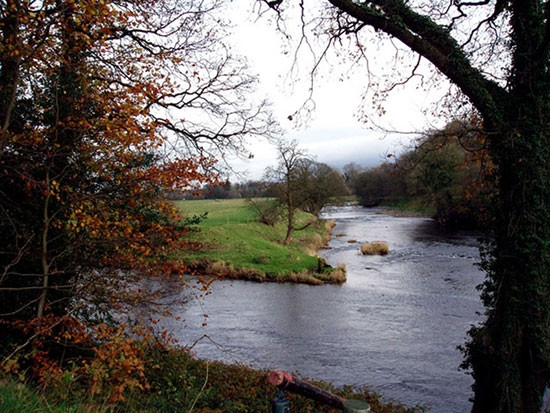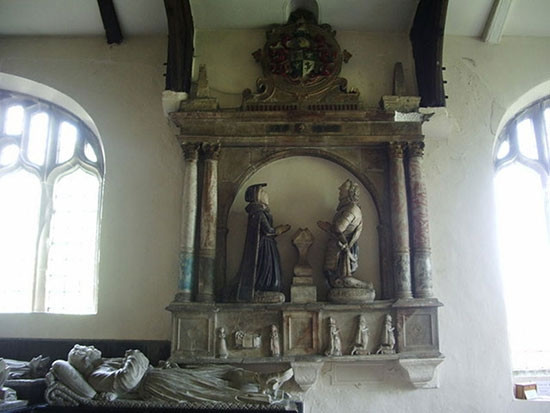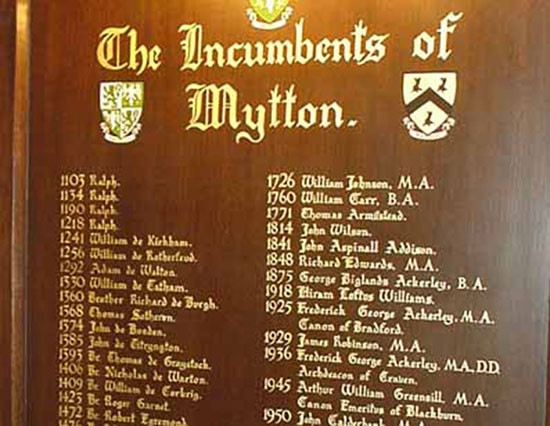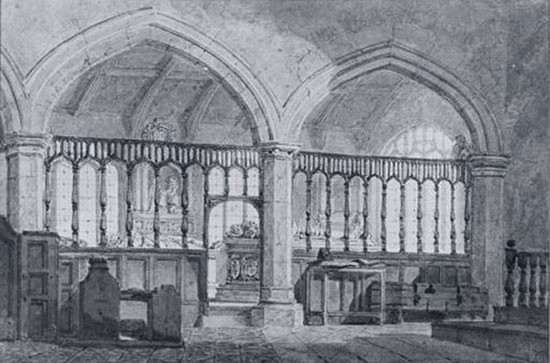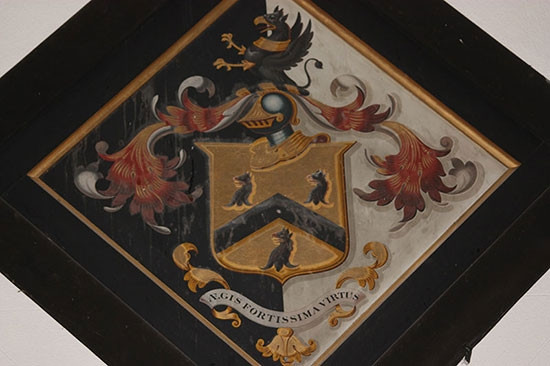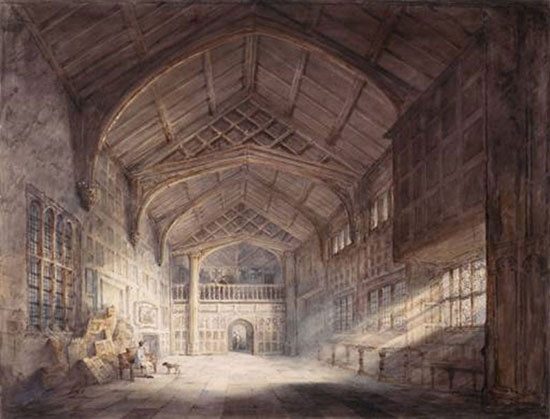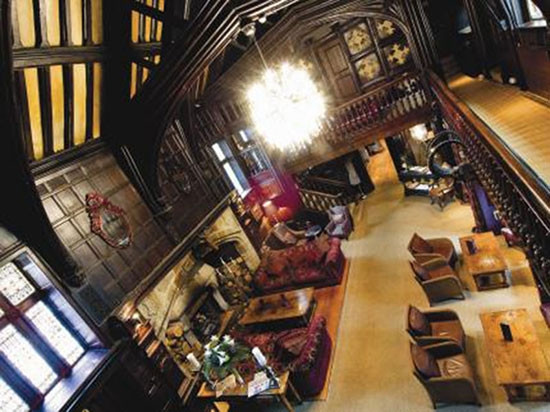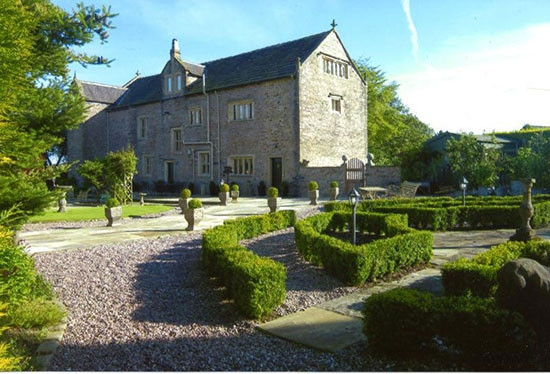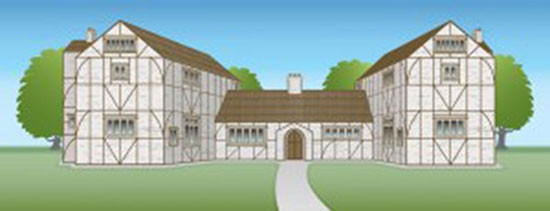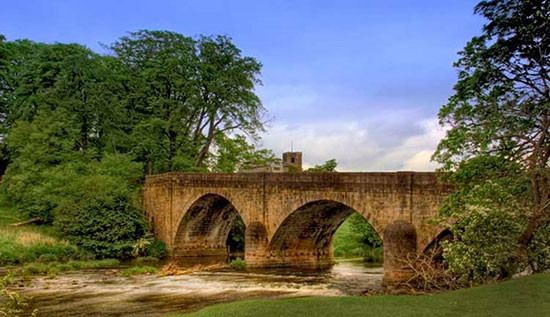History of Mitton
The name Mitton derives from the word Mythe, meaning the 'junction of rivers', as the Ribble and its major tributary the Hodder converge nearby.
The Domesday manor of Mitton encompassed both Greater Mitton and Little Mitton, stradling lands on both banks of the River Ribble. The river itself was once the county boundary, with Little Mitton being on the Lancashire side of the river, and Great Mitton being on the Yorkshire side. Since the boundary changes of 1974, both villages are now very solidly in Lancashire.
From the late eleventh century, Mitton fell under the Lordship of Bowland, the Lords of Bowland being lords paramount of the Royal Forest.
Mitton was a mesne manor from the early twelfth century. Its first lord, Radulphus le Rus, may have been a scion of the de Lacy family. Descendants of Radulphus assumed the surname de Mitton. In the late thirteenth century, the family adopted the surname Shireburne by marriage, thereby laying the foundation for the dynasty of Shireburne of Stonyhurst. Stonyhurst was the family seat, two miles from Mitton, and is now Stonyhurst College.
It is the Shireburne family whose tombs are in the Shireburne chapel in All Hallows church, Mitton, which dates from 1270.
The manor passed out of Shireburne ownership in the fourteenth century but was re-acquired in 1665. With the extinction of the Shireburne male line in 1717, the manor passed to the Hawksworth and finally, Aspinall families.
Great Mitton is also the geographic location that Tolkien used in many cases as inspiration for his trilogies about a similar 'Middle Earth' or or from Norse mythology 'midgard' description. Tolkein often walked Great Mitton and was well aware of its definition from ancient times.
All Hallows Church
The first historical record of a church at Mitton comes from 1103 when a man with the name of Ralph the Red was the rector of a church that was probably made of timber.
The oldest surviving portion of the church dates to around 1270, the chancel having been added early in the 14th century. The impressive tower is mentioned in a document dated 1438, and the whole of the interior is an architectural gem: All Hallows is held to be one of the finest Medieval churches in England.
William Turner visited the church and sketched the tombs and the chapel of the Shireburn family.
One of the most notable features of All Hallows - aside from the notable slope of the nave from west to east - is the 15th century chancel screen, which may have been brought here from nearby Sawley Abbey after the abbey was dissolved by Henry VIII. Aside from the screen, which was installed in 1593, much of the impressive interior is due to the efforts of the Shireburne family of nearby Stonyhurst. Memorials to generations of Shireburnes stand within the Shereburne chapel.
When we were refurbishing the pub, Martin Aspinall directed us to the Aspinall coat of arms on the walls of the church, which is the most accurate representation of the crest. It is this that we copied for the coat of arms on the pub's sign, which was painted for us by a heraldic artist in America.
The Leper's Squint
A hole in the outside wall of the church is known as the "hagioscope" or the "Leper's Squint." This allowed the sick to peep into the church and take part in the service without infecting the healthy.
Little Mitton Hall
Little Mitton Hall is just up the road from the Aspinall Arms on the south side of the river, and is not to be confused with Great Mitton Hall on the opposite bank of the river next to All Hallows church.
The present Hall was built in the reign of Henry VII (1485-1509). Little Mitton was purchased about 1665 by Alexander Holt, of the Gristlehurst family, and descended to the Beaumonts of Whitley Beaumont, in Yorkshire.
Following the failure of the Beaumont line, Little Mitton Hall was purchased by John Aspinall in about 1857-60, who undertook a great deal of rebuilding and additions to the Hall. The old walls of timber were removed, but the entrance hall was left untouched. From John Aspinall the Hall descended (via his son ?) to his grandson, Ralph John Aspinall who was the owner in 1872.
Little Mitton Hall was sketched by William Turner who travelled extensively in the Ribble Valley in the early 19th century.
The details Turner highlighted are still evident to this day:
Great Mitton Hall
Great Mitton Hall dates to the period between 1374 and 1393 but there have obviously been a number of alterations since that date.
Now privately owned, the hall was built to house a group of priests in training and under the control of the Dean.
This how Great Mitton Hall would have been in the 14th century. The center part was probably where the original manor house was, and would have been just one great room. The cross wings were probably added to make an H configuration. One side would have been for the servants with a cross hall to service the manor lord family. The structure would have been made of wattle and daub with a wood frame. This was confirmed with a recent renovation.
Later, probably in the 17th century, the stone facade was made over the original Tudor style house for fire prevention. During some of its history, Great Mitton Hall has been used as a refectory as well as a hospital.
With thanks to http://thefamilydemitton.wordpress.com
Mitton Bridge
Mitton bridge, adjacent to the pub, is built over the River Ribble, and probably dates from the early C19th when it replaced the oar-propelled ferry crossing of the river.
It is Grade II listed, and described in the listing text as 'Sandstone ashlar. 3 segmental arches with rounded cutwaters. Solid parapet with string and weathered coping. The southern parapet is inscribed 'LITTLE MITTON LANCASHIRE. GREAT MITTON YORKSHIRE'.
William Turner sketched the bridge on his travels in 1816. Curiously, the pub is not shown in the sketch, presumably because it was just out of the frame: we know this because the pub, then known as the Mitton boat, pre-existed the bridge.
The Aspinall Arms
The Aspinall Arms is a coaching inn believed to date from the 17th century, and was originally known as the Mitton Boat.
Before the bridge was built there was a row boat ferry on the site of the Aspinall Arms pub which took travellers across. The old boathouse is reputed to be incorporated into the current structure of the Aspinall Arms.
At that time, the River Ribble enjoyed some of the finest fishing in England...until in the mid 19th century, it suffered from industrial pollution.
In 1880, Mr Ralph John Aspinall, high Sheriff of Lancashire and owner of large estates along the Ribble, and Mr Hick, his wealthy tenant, look the local cotton mill to court for polluting the river and destroying the fish, so that Mt Aspinall's stretch of the river, with the most valuable fishing rights in England, had been destroyed, and the Aspinall Arms, formerly a favourite inn amongst anglers, no longer flourished because the fish were gone. They won the case.
The children's shoes
Concealed shoes - that is, shoes intentionally hidden in wall cavities, chimneys and beneath floorboards, are relatively common throughout England - indeed, over 1,200 examples have been recorded.
The belief was that they were a charm of protection. The local village 'Cunning Man or Woman' would advise householders to conceal a single shoe in the fabric of a house with the intention it would act as a magical decoy and evil spirit or ill intent sent upon the family would be caught in the shoe and dispersed.
This belief harks back to the end of the 13th century when the rector of North Marston in Buckinghamshire is reputed to have cast the devil into a boot.
These ancient shoes, which measure only 7.5cms in length (3 inches), were discovered under floorboards when renovation work was undertaken several years ago. The landlord at the time apparently subsequently returned the shoes to their hiding place.
Rebecca Shawcross, shoe resource officer at the Northampton Museum and Art Gallery, which has a special boot and shoe section, identified them as 'an interesting example of two individual and well worn children's Latchet shoes from the 17th century'.
If you have any further information on the pub that you think would fit nicely here we would love to hear from you.


